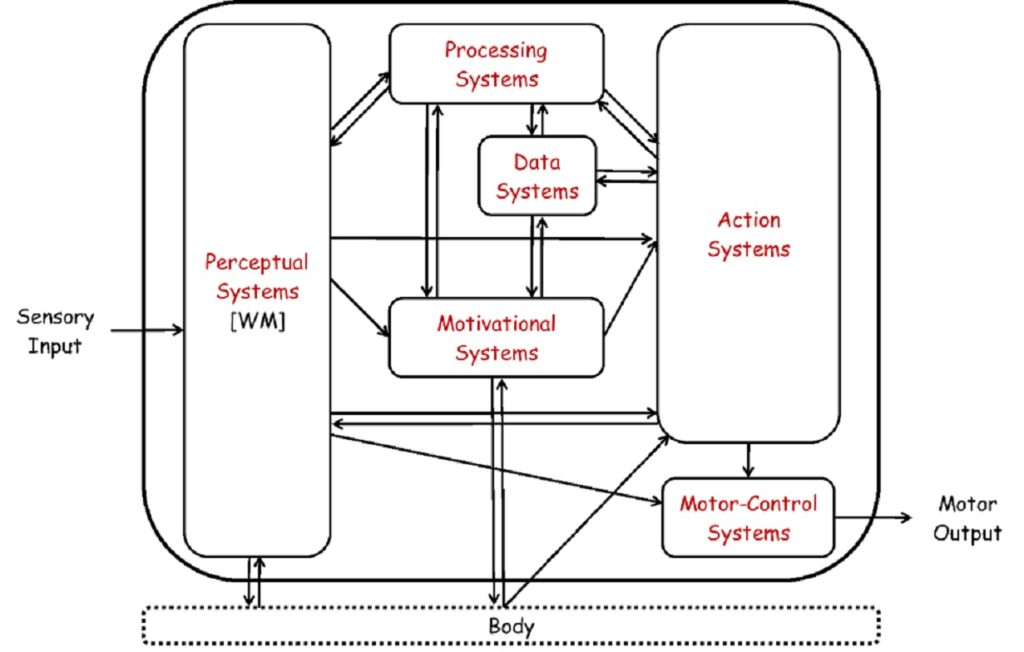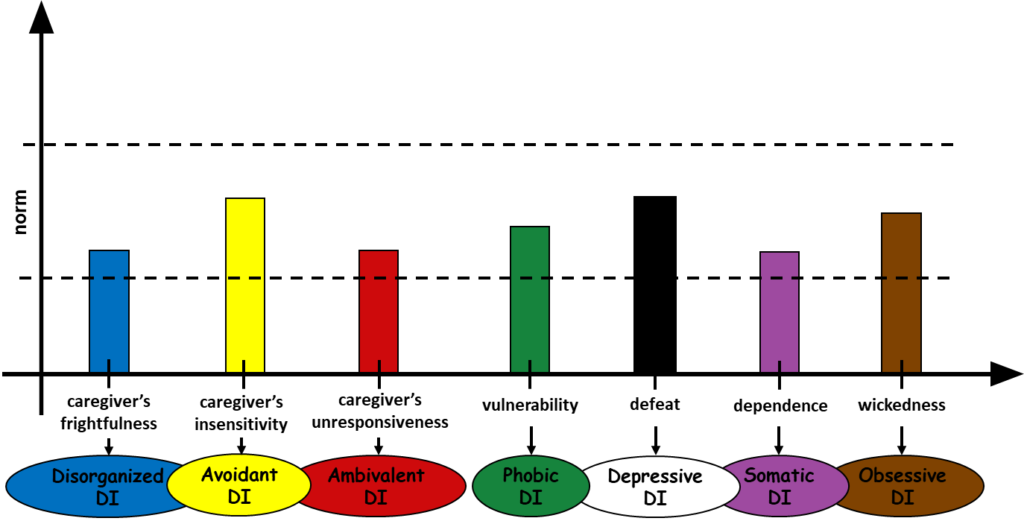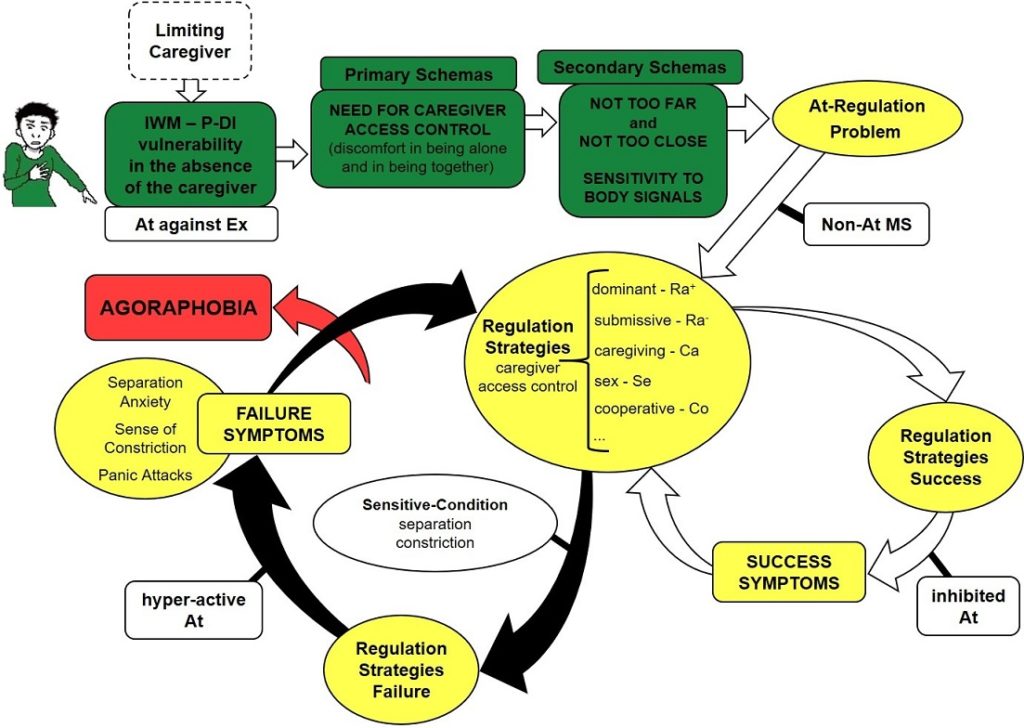The Book
Programming the Mind
The Seven Dimensions of Attachment
in Personality and Psychopathology
[ Coming Soon ]

We Are Biological Machines
Programmed By Our Caregivers

- Between Clinical Psychology & Engineering -
The Book
The book is divided into 3 parts:
- Architecture of the mind (and motivational systems).
- Model of personality.
- Model of (behavior and) psychopathology.
developed in 8 chapters, which are here outlined.
We are biological machines programmed by our caregivers and – directly or indirectly – our motivational dynamics critically depends on our implicit attachment knowledge.
[ Shortly Available ]
‘Programming The Mind’ presents the MAPP theory and its application to the understanding of mental functioning at a clinical level. MAPP stands for Mind Architecture, Personality, and Psychopathology and, indeed, it represents a general theoretical framework in Clinical Psychology able to offer the common ground necessary to integrate the different and valuable contributions from all schools and orientations. Moreover, the engineering approach embraced by the MAPP gives a methodological direction for the further development of such contributions.
The MAPP focuses on the psychological differences between individuals caused by the information they acquire and process, assuming a healthy organic state. In this condition, implicit attachment knowledge appears to be the core of personality.
Chapters Overview
- 1. The Architecture of the Human Mind
- 2. Motivational Systems
- 3. Attachment as the Core of Personality
- 4. The Seven Dimensions of Attachment
- 5. The Definition of Internal Working Model
- 6. Behavior and Psychopathology Through Motivational Dynamics
- 7. Primary and Secondary Psychopathologies
- 8. Case Studies – The MAPP in Action
1. The Architecture of the Human Mind
The MAPP architecture of the human mind provides a framework for the rest of the theory. It is based on evolution and conforms to neuroscientific data, thereby making such data implicitly available to clinical theory. Consistently, it is inspired by the following design principles: 1. Intrinsic purposefulness; 2. Information processing; 3. Massive modularity; 4. Dual system organization; 5. Stratification; 6. Differential read and write access.
Overall, it synthesizes the main characteristics of the human mind useful at a clinical level and, in particular, provides the context in which the Motivational and Data Systems are located. Among them, the central role is played by the attachment systems, whose analysis allows for a deeper understanding of personality and motivational dynamics.

The architecture explains how a fundamentally parallel and unconscious machine can appear as a serial and conscious one. Three architectural versions are outlined with increasing detail.

Human psychology centers on the social level and, more precisely, on the attachment motivational system and its implicit data structure.
2. Motivational Systems
According to the MAPP, human beings are intrinsically purposive machines. Drawing on neuroscience, evolutionary psychology, ethology, and clinical psychology, a comprehensive set of 19 motivational systems suitable for clinical psychology is synthesized. This set is able to provide a convenient description and explanation of behavior.
Following both an evolutionary and relational criterion, the MAPP organizes the motivational systems in a heterarchical structure on three levels:
- The individual level (reptilian prototype): Physiological Regulation, Health, Defense, Sex, Exploration, Territoriality, Predation;
- The social level (non-human mammalian prototype): Attachment, Caregiving, Mating, Kinship, Play, Affiliation, Ranking, Cooperation;
- The global level (human prototype): Intersubjectivity, Meaning, Legacy, Transcendency.
3. Attachment as the Core of Personality
The MAPP conceptualization of personality is founded on attachment: the Internal Working Model (IWM) of attachment and its 7 dimensions are the core of personality. These dimensions are acquired through imprinting, for the first time during two consecutive early sensitive periods (6-24 months and 2-6 years), which are termed α- and β-period respectively. Consistently, the corresponding acquired dimensions are termed α- and β-dimensions.
The α-dimensions are disorganization, avoidance, and ambivalence – which are recognized by the Standard Attachment Theory – while the β-dimensions are phobicity, depressivity, somaticity, and obsessivity – which are introduced by the MAPP. Two processes underlie attachment and personality: (1) a learning process, during which the data is imprinted, and (2) a working process, during which the imprinted data is operational. Attachment, as a whole, is generated by multiple factors, but the central role is played by the IWM, which is the primary drive of human socio-psychological behavior.

Finally, an attachment module that synthesizes the outlined theory is presented. In the architecture of the mind, this module will provide both the motivational and data sub-modules.

Importantly, disorganization, phobicity, depressivity, somaticity, and obsessivity are directly related to psychopathology. Their excessive presence is likely to bring about a corresponding specific dysfunction. On the other hand, avoidance and ambivalence do not have a specific pathological manifestation, but are regularly found in all clinical conditions.
4. The Seven Dimensions of Attachment
According to the MAPP, attachment and personality are 7-dimensional. Here, the complete set of such dimensions – consisting of 3 α- and 4 β-dimensions – is analyzed.
(1) Disorganization is the product of the relationship with a frightening caregiver. (2) Avoidance comes from the insensitivity of the caregiver, defined as the insufficient emotional connection – i.e. insufficient love – provided to the child. (3) Ambivalence comes from the unresponsiveness of the caregiver, defined as their physical unavailability when the child needs it. (4) Phobicity, (5) depressivity, (6) somaticity, and (7) obsessivity are respectively related to how much the caregiver is exploration-limiting, emotionally unreachable, defining, and judgmental. The α- and β-dimensions are functionally independent of each other and have adaptive value in terms of both survival (for the child) and reproduction (for the future adult).
5. The Definition of Internal Working Model
The MAPP personality model centers on the concept of Internal Working Model (IWM) of attachment, which is here formally defined by introducing the notion of Data Imprint (DI): the imprinted information that corresponds to an attachment dimension. As a result, personality is characterized by 7 DIs. Operationally, the DIs correspond to variables that take values between zero and one, and each specific configuration of DIs (their values) forms a specific personality profile.

Formulated this way, the concept of personality provides the basis for the explanation of most ‘principal’ mental disorders – the ones originating from a psychological/informational cause, as opposed to those originating from an organic one. It is possible to define both a healthy and pathological personality, and examples of pathological – disorganized, phobic, depressive, somatic, and obsessive – ones are provided. This etiological differentiation is the foundation for the classification of psychopathology.

In general, socio-psychological psychopathologies can be divided into 2 main classes, primary and secondary. (1) Primary pathologies are deep, attachment pathologies, whose origin lies in attachment relationships and the resulting IWM. They are personality disorders. By contrast, (2) secondary pathologies are shallow/superficial, non-attachment pathologies, whose origin is to be found in non-attachment social interactions and the resulting data structures. They are not personality disorders and are, therefore, less deep, even though not necessarily non-severe in terms of symptomatology.
The MAPP focuses on primary pathologies, where attachment activation and the IWM are critical. In this case, 5 main pathological personalities – disorganized, phobic, depressive, somatic, and obsessive – are possible.
6. Behavior and Psychopathology Through Motivational Dynamics
According to the MAPP, knowledge underpins motivational dynamics and, in turn, motivational dynamics underpins all behaviors, no matter if healthy or pathological. In other words, the data stored in the brain are the primary determinant of behavior. But clearly, not all data have the same weight. Attachment, as the core of personality, plays the major role.
The Internal Working Model (IWM) of attachment contains the 7 pieces of information that correspond to the 7 basic attachment needs met by the caregiver – 7 caregiving features for 7 attachment dimensions. This information determines conditions to which the subject can become particularly sensitive. In pathological circumstances, the data contained in the IWM can trigger intolerable internal states, thereby limiting the subject depending on the involved dimensions. In other words, a pathological personality restricts motivational dynamics. Attachment activation becomes a potential problem, which the subject alleviates through regulation strategies. These strategies entail the activation of another motivational system to prevent attachment from activating. On the other hand, a healthy personality does not impose any particular constraint on the motivational dynamics. As a result, a healthy subject can activate attachment when necessary without correcting the general course of action to avoid it. From an engineering perspective, the mind acts as a control system.
7. Primary and Secondary Psychopathologies
Between the socio-psychological psychopathologies, the MAPP distinguishes primary and secondary mental disorders. (1) Primary pathologies originate from attachment relationships and their Internal Working Model, whereas (2) secondary pathologies stem from non-attachment interactions and their less deep data structures. 5 kinds of primary pathologies can be identified:
- Disorganization – the disorganized data imprint is pathologic;
- Phobicity – the phobic data imprint is pathologic;
- Depressivity – the depressive data imprint is pathologic;
- Somaticity – the somatic data imprint is pathologic;
- Obsessivity – the obsessive data imprint is pathologic.

The investigation of the role of insecure attachment styles in primary pathologies suggests that avoidance and ambivalence have very different roles and weights. Avoidance is the center of non-purely-disorganized attachment disorders, while ambivalence modulates them, especially with regards to the direction of the regulation strategies and the appearance of the dysfunction.

- 7 caregiving features determine 7 imprinted attachment dimensions.
- The 7 imprinted attachment dimensions constitute the basis of personality.
- Personality is the principal behavioral modulator.
- Attachment needs to be regulated.
- Attachment is regulated through regulation strategies.
- Regulation strategies inhibit attachment activation through non-attachment motivational systems. They can correspond to dysfunctional manifestations as well and are anyway the expression of a dysfunction.
- Real healing means re-imprinting the Internal Working Model through a corrective emotional experience.
8. Case Studies – The MAPP in Action
10 case studies are discussed to demonstrate how the MAPP is applicable to a large variety of mental disorders, as identified in terms of symptomatic manifestations. Importantly, such manifestations can have no apparent connection to the underlying personality. The provided theoretical framework is translated into an effective and efficient method of analysis. Indeed, it coherently connects etiology, acquired knowledge, and symptoms, thereby allowing for a linear reading of the problem from its origin to its development and manifestation.
The presented clinical cases illustrate the fundamental concepts and tools provided by the MAPP for primary pathologies.
F.A.Q.
The Book
The book is the result of a decade of work and collects scientific evidence from many fields besides attachment theory, such as neuroscience, philosophy of mind, ethology, evolutionary, developmental, and clinical psychology. Full references are provided in the book. The resulting MAPP theory formulates hypotheses that can be empirically tested to allow for the correction and development of the theory itself. The MAPP has been clinically tested since the beginning, and further testing — through a clinical questionnaire and a computational model — is presented here. To date, the theory has been fully supported.
The MAPP theory presented in the book is developed following a cognitive-clinical perspective. However, given its scientific basis, it is compatible with any school and orientation — cognitive psychotherapy and psychoanalysis, for example. The MAPP is indeed proposed as a unifying theoretical framework in clinical psychology. Its relational foundation and engineering approach make it particularly suitable not only for the formulation of a clinical case but also for a vast range of applications. The personality test and computational model presented here are just an example.
To join Prog The Mind, the most important thing is sharing its objective and values. Of course, agreeing with its theoretical foundations is also necessary to share a common ground. From this perspective, what is essential is the relational approach based on attachment and the understanding of how the mind is programmed/reprogrammed. Having said that, the theory can be acquired in various ways, and many techniques are compatible with it. Prog The Mind outlines a theoretical framework and a therapeutic protocol while, at the same time, values independent clinical work for the benefit of the client.
Definitely. The book is exactly about understanding how the mind works — especially in dysfunctional conditions. The MAPP theory presented in the book is immediately applicable to the understanding of most forms of mental discomfort — such as anxiety, mood, eating, and obsessive-compulsive disorders, just to mention the most common. Ten examples of real mental conditions are presented and discussed in detail, showing the striking explanatory power of the theory.
Yes, it does. Personality is the set of one’s (fairly) stable psychological traits. The book considers the attachment traits, which we call dimensions, and describes in detail each of them. Our personality profile is produced by our particular combination of dimensional values.

